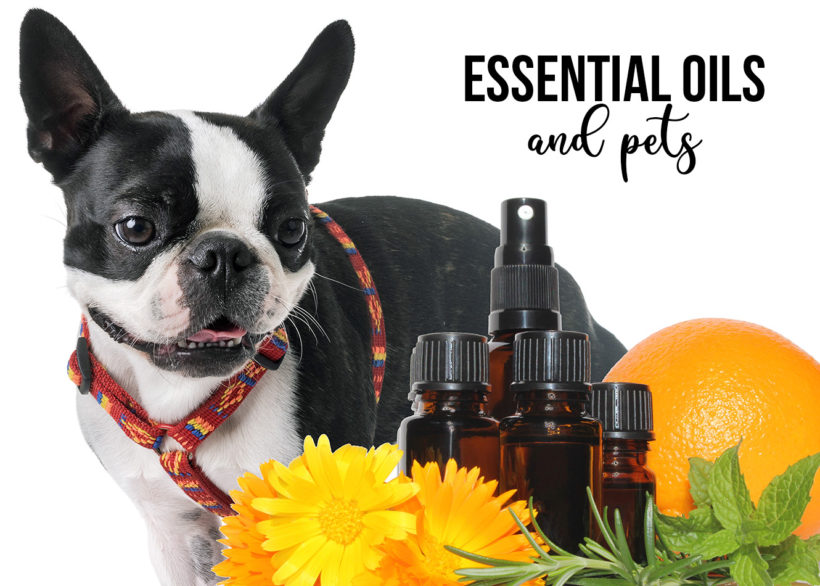By Cathy Baillie-Whitehead
It seems that many people have received essential oil diffusers as gifts recently and while they are eager to use them, they are also concerned about the safety of using them around pets.
As a household of multiple pets, I had the same initial concerns. There are some great resources around but also a ton of conflicting information and the last thing I wanted to do was hurt my animals.
So, to help others who have similar concerns, I will share what I have learned thus far.
- Essential oils can be toxic to pets.
These include eucalyptus, tea tree, cinnamon, citrus, peppermint, pine, wintergreen, and ylang ylang but others are often mentioned. They should not be used on pets (or around pets, if possible). Always read the label but this is especially important if you are using an essential oil blend.
Note: Cats in particular are drawn to peppermint as it is a member of the same family as catnip. Our cat, Treacle goes nutty when she smells peppermint (like she ate a ton of catnip). As such, we don’t use peppermint in the areas that she frequents. Think of essential oils in the same way you do with chocolate. Chocolate can be toxic to dogs and yet many dog owners still eat chocolate. - Location. Location. Location.
As with everything from vases to candles to drinks, keep your essential oils and diffusers out of reach. A tail or an inquisitive paw, can easily tip over a diffuser and spill it. Make sure your diffuser is in a space where it is secure. - What’s that smell?
Yes, a Boston’s fart can clear a room but cats and dogs are actually much more sensitive to scents than us. Set your diffuser to intermittent rather than continuous and avoid using your diffuser in closed in areas where pets reside. Always allow your pet to leave the area if they choose to. - A little goes a long way.
Use the smallest amount possible. Just a couple of drops in your diffuser is often all you need. Similarly, if using on your skin, dilute your oils with a carrier oil (such as fractionated coconut oil, jojoba oil, etc.). Suggestions for a dilution ratio range based on purpose. Starting with a ration of one drop essential oil to 10 drops of a carrier oils is a good place to start. In addition, if you are using essential oils topically, to avoid your pet accidently ingesting your oils, be mindful of where you place your oils and where your pet may lick you. - Natural doesn’t always mean safe.
There are a variety of uses for essential oils. You can diffuse them, apply them on the skin (with a carrier oil) and some can be taken internally. There are many sources that promote the benefits of using essential oils as natural solutions for pets, and when you are looking for a treatment for your pet, some may be tempting to try. However, there are several factors that influence the safe use of essential oils (efficacy, sourcing, interactions-just to name a few). Always consult with your vet before using any oils on or with your pet.
BTRC strongly recommends consulting with a veterinarian who knows your pet, before using any essential oil on your pet. Remember, what is safe for one pet might not be safe for another! Just because your friend’s pet, neighbour’s pet, or a pet on the internet reacted well does not mean your pet will react the same way. If you see/read/hear about something that is interesting and that you would like to try on your pet, take that information to your veterinarian for validation.
Should you have additional questions about essential oils and how to use them contact Cathy Baillie-Whitehead at cathy.baillie@gmail.com
If you suspect your pet has gotten into anything toxic, call your veterinarian or Pet Poison Helpline at 855-764-7661 for help immediately. The sooner a poisoning is diagnosed, the easier, less expensive, and safer it is to treat. Do NOT give your dog any milk, food, salt, oil, or any other home remedies.
While waiting for further instructions:
- If the product was inhaled, take your dog into fresh air.
- If ingested, Do NOT induce vomiting or give them activated charcoal. This puts your pet at risk because essential oils can stick to the lungs and airway leading to lung inflammation or airway obstruction.
- Put the product and packaging in a sealed bag and bring it with you to the vet.
- If your pet gets oil on its skin or fur, wash it off as quickly as possible using hand dishwashing soap.


